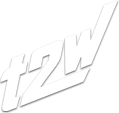I would be ver grateful if someone could tell me I've understood this correctly (and put me right if not):
I read that 'price is everything' and nothing else on a chart really matters. So I felt I had to have a good fundamental understanding of how price works. Bear with me while I have a go at explaining (at my current very new level of understanding 🙂)
For every seller there has to be a buyer and vice versa
So hypothetically, if buyers are happy to pay say 1.00 for a share and sellers are happy to receive that price then the market for that share is in equilibrium.
However this is rarely the case because sellers will want to get the best price they can for a share (say 1.20) and buyers will want to pay as little as possible for a share (say 0.80).
So let's say the price falls to 0.80. Now the buyers are happy but the sellers are unhappy and buying volume increases. Demand now exceeds supply.
Inevitably then, prices will rise, which will please the people who bought at a lower price! Traders see the prices rising and jump on the band-wagon. Buying pressure forces the price higher still. I think this is what is meant by 'buyers are in control' but I'm not 100% sure.
So the price rises past the 1.00 mark and approaches 1.20. Now nobody wants to buy because the cost is too high. In fact those who bought at 0.80 are selling like mad trying to make as much profit as possible.
Supply now exceeds demand, so inevitably the prices will fall. The spate of selling forces the price lower. 'Sellers are in control'.
Support is at 0.80 and resistance is at 1.20.
So, please tell me I've understood this correctly and if not, where I've gone wrong.
Many thanks, G.
I read that 'price is everything' and nothing else on a chart really matters. So I felt I had to have a good fundamental understanding of how price works. Bear with me while I have a go at explaining (at my current very new level of understanding 🙂)
For every seller there has to be a buyer and vice versa
So hypothetically, if buyers are happy to pay say 1.00 for a share and sellers are happy to receive that price then the market for that share is in equilibrium.
However this is rarely the case because sellers will want to get the best price they can for a share (say 1.20) and buyers will want to pay as little as possible for a share (say 0.80).
So let's say the price falls to 0.80. Now the buyers are happy but the sellers are unhappy and buying volume increases. Demand now exceeds supply.
Inevitably then, prices will rise, which will please the people who bought at a lower price! Traders see the prices rising and jump on the band-wagon. Buying pressure forces the price higher still. I think this is what is meant by 'buyers are in control' but I'm not 100% sure.
So the price rises past the 1.00 mark and approaches 1.20. Now nobody wants to buy because the cost is too high. In fact those who bought at 0.80 are selling like mad trying to make as much profit as possible.
Supply now exceeds demand, so inevitably the prices will fall. The spate of selling forces the price lower. 'Sellers are in control'.
Support is at 0.80 and resistance is at 1.20.
So, please tell me I've understood this correctly and if not, where I've gone wrong.
Many thanks, G.


